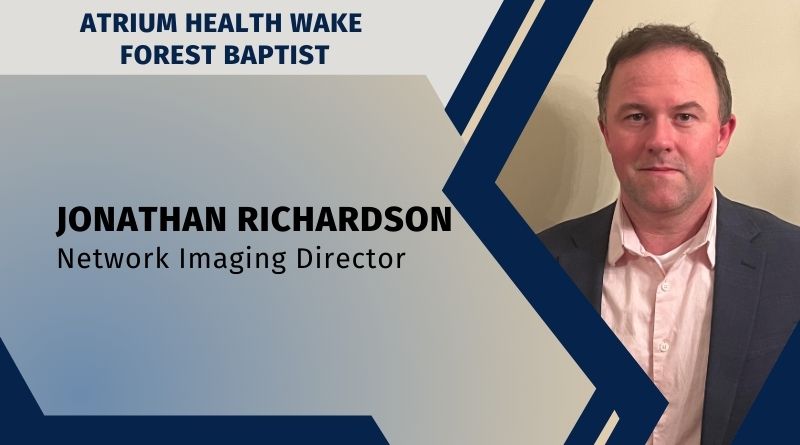Spect-CT: The Challenges of a Rapidly Growing Asset in Nuclear Medicine
By Jonathan Richardson, Network Imaging Director, Atrium Health Wake Forest Baptist
Spect-CT has been in the nuclear medicine world for some time now. However, it was uncommon to see this technology early on in most departments. It is often reserved for academic or larger institutions. With little to no reimbursement for this, convincing leadership of the value was often difficult when the return on investment was factored in. Today, with new CPT codes that do reimburse for Spect-CT exams and new radiopharmaceuticals, nuclear medicine teams are faced with the challenge of meeting the demand for Spect-CT on a day-to-day operational level.
There is no doubt that radiologists enjoy the perks of added confidence of a Spect-CT. Over the years, radiologists have found more studies that benefit from Spect-CT, including thyroid cancer, bile-leak, VQ, and post-therapy studies. While the benefit is without question, it poses a challenge to departments with only have 1-2 Spect-CT cameras. With exams such as cardiac perfusion exams scheduled, the challenge of adding more patients onto an already busy schedule provides a challenge to the technologist team. Technologist managers, and radiologists must work together to help streamline as many procedures as they can to ensure a smooth day-to-day operation. Looking at the frequency of when additional Spect-CT exams are ordered, and what type of exams, leadership can better predict when bottlenecks in scheduling may occur. Not only does this help control wait times, but it can also improve radiologist workflow by preventing a stop in their current task. Protocolling exams on which will need Spect-CT ahead of time helps prepare staff and allows the radiologist to focus on reading more studies, instead of being interrupted to review the need for additional images.
Spect-CT is here to stay, more radiologists are finding uses for it that help boost their confidence, or even decrease their time in a questionable area.
From the radiologist aspect, Spect-CT clears questions by having a low-dose CT scan to correlate with, however this is more data to analyze and for multiple patients. Ensuring hanging protocols are in place on viewing stations, and using an efficient layout help decrease the amount of time radiologists spend scrolling, flipping back and forth between image sets, or comparing previous studies help to maximize this valuable asset for departments. A compatible workstation that can display the data coming over or even pull prior data saves minutes off each read, but even more importantly, decreases radiologist burnout. With AI emerging and finding new uses every day, these systems can accelerate the readings a radiologist performs, even organizing the studies for them. Regions of interest can be pinpointed, requiring an overread by the radiologist, which speeds up the turnaround time per read. With patients having access to their own studies, the expectation of a decreased turnaround time from study completion to reading is quickly growing. Patients now expect almost the same day results, and do not feel the need to wait on their provider to discuss these results with them.
While managing growth is challenging enough, billing is often a foreign language to staff and it can be difficult when ensuring you are properly reimbursed for using a CT with the Spect exam. Billing departments are typically generalized in today’s world with very few having a strong background in imaging. Due to this, leaders and radiologists must ensure that the correct CPT codes are being used to recognize the use of this upcoming technology. There are new CPT codes that provide additional reimbursement for using low-dose CT at the time of Spect. However, terms, or matching CPT code to the exam can be challenging. Meeting with the billing or coding team can help boost the confidence of each that the correct study is being charged. This relationship can help ensure new procedures are created and charged in the proper fashion without the risk of a denial from an insurance payer.
The last challenge is often overlooked but additional staff training can be beneficial in ensuring optimal images are created, and excess radiation exposure is avoided. Nuclear medicine staff receive great training in the ways of radiation safety as it pertains to preventing spills, or correct doses to the patient. However, we do not receive as much cross-sectional anatomy or CT physics training. Both play a vital role in using Spect-CT, depending on the state in where the services are provided, it could be a requirement. With the majority of staff working full-time, organizations must find other ways to educate their teams. There are several external sources that staff can use to learn about CT and be evaluated through testing to ensure they understand the material. This can be extremely helpful in establishing protocols, especially with pediatrics. While the CT by radiologist criteria may be deemed “not diagnostic”, staff can provide great CT images using low dose by tweaking the CT parameters to provide near diagnostic quality, while ensuring the patient receives the lowest dose possible.
Spect-CT is here to stay, more radiologists are finding uses for it that help boost their confidence, or even decrease their time in a questionable area. For the staff, it provides a new aspect to their job, finding the time to add more patients onto a schedule continuously. With many organizations struggling to provide capital for new equipment, departments must provide a method of ensuring safe, high-quality images, that do not burn out any aspect of the imaging team. This new technologist offers more information that increases the exam, leaving ordering providers with a more accurate report, that drives patient care.

